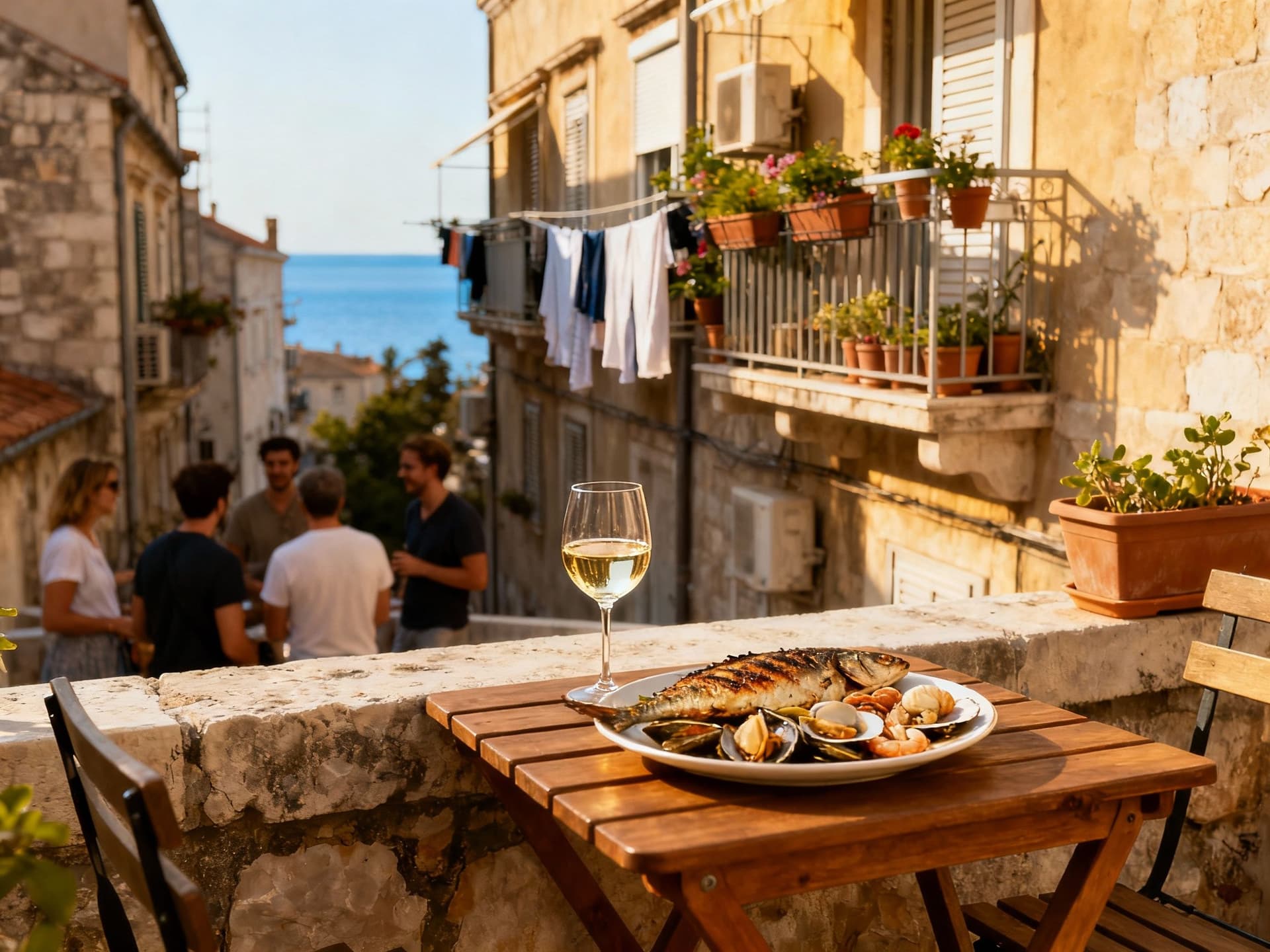Coastal Premiums, Inland Value: Croatia's Hidden Cycles
Croatia pairs coastal premium growth with policy shifts on short‑lets; model seasonal cashflow, expect double‑digit regional price rises and stress‑test yields before you buy.
Imagine walking a sun-warmed waterfront in Split at 09:00 — espresso steaming, stone steps still cool underfoot, ferries ticking their way to the islands. Three streets inland you find a bakery where locals queue for fresh burek; five minutes further, an investor is measuring a two‑bedroom apartment whose price has moved faster than wages. Croatia feels like two countries at once: a coastal tourism engine and an inland market still shaped by local demand. That split — lifestyle splendour on the shore, quieter fundamentals inland — is the frame for any serious market decision.
Living Croatia: rhythms, places and real texture

Croatia’s daily life is tactile and seasonal. Coastal towns pulse from April to October with tourism, open-air markets, seafood restaurants and late-night promenades; winter retreats to quieter routines — neighbourhood cafés, school runs, and municipal maintenance. Zagreb behaves like a normal European capital year‑round: morning trams, lunch crowds at Dolac market, and a steady rental market driven by students, professionals and families.
Coastal micro-neighbourhoods: Split's streets and Hvar's lanes
On Split’s Riva you buy view and footfall; in Varoš you buy stone‑built character that rents well off-season to couples. Hvar Town’s harbourfront commands premiums that translate into low vacancy but volatile short‑term yields. Knowing the lane — which street catches the afternoon sun, which café draws locals not tourists — matters as much as price per square metre.
Inland calm: Zagreb, Varaždin and pockets of value
Zagreb’s neighbourhoods — Donji Grad, Maksimir, Črnomerec — trade at lower coastal premiums but offer steadier long‑let demand, predictable rental yields and liquid resale markets. Smaller inland towns such as Varaždin or Osijek offer price-per‑m² bargains and growing local demand as remote work widens possibilities for relocation.
- Lifestyle highlights: markets, beaches and everyday points of delight
- Dolac Market (Zagreb) — morning produce culture and easy apartment-to-tenant demand
- Split Riva & Varoš — tourist exposure with clear short‑let upside and seasonal risk
- Hvar Town harbour — scarcity premium, high asking prices, low walking‑distance inventory
Making the move: market mechanics that shape returns

The data matters: Croatia’s official house price index shows double‑digit annual growth in recent quarters, with the Adriatic coast and Zagreb both posting significant increases. That growth coexists with policy responses aimed at rebalancing supply — notably measures to discourage short‑term tourist conversions — which change revenue models for buy‑to‑let investors. Read these two signals together: prices are rising, but the rules that underpin rental income are shifting. (See DZS housing index.)
Property types: what each means for lifestyle and yield
Seafront apartments deliver premium capital appreciation and seasonal top-line revenue but carry vacancy and regulation risk. Inner-city flats in Zagreb deliver lower headline prices per m² but more stable long‑let yields. Renovation projects in stone houses across Dalmatia promise character-driven upside but require capital for seismic retrofits and insulation to make them year‑round rentals.
Working with local experts who combine lifestyle and analytics
Choose advisers who can model seasonal cashflow, local vacancy curves and regulatory scenarios. A good local agent will know which streets in Split stay rented through winter, which island properties see year‑round demand, and how municipal zoning affects conversion to long‑term leases. That knowledge converts seaside romance into quantifiable risk and return.
- Practical steps to match lifestyle to investment (stepwise)
- 1. Define target return: set a net yield or cap rate target after tax and management costs.
- 2. Layer seasonality: forecast monthly occupancy for the property type (short‑let vs long‑let).
- 3. Model regulation: run scenarios with short‑let clampdown and long‑term tenancy incentives.
- 4. Validate on‑the‑ground: visit neighbourhoods in shoulder seasons (April/October) to test year‑round life.
Insider knowledge: what expats wish they'd known
Two recurrent surprises for foreigners: first, coastal premiums often mask thin liquidity — the property you want may not trade quickly; second, policy moves to tax and limit short‑lets are real and change cashflow math. Local news and specialist reports point to rapid price rises along the Adriatic while parliament debates measures to shift tax burdens to property and encourage longer leases. Treat both as active variables in any valuation.
Cultural & seasonal realities that change daily life
Language is a soft friction: basic Croatian helps for municipal procedures, but English suffices in major coastal towns. Social life follows the calendar — terraces and festivals in summer, community centres and indoor markets in winter. For buyers, that means planning for seasonal amenity needs: heating, insulation and winter maintenance can be as important as proximity to the sea.
Long‑term picture: cycles, supply and policy
Expect the next five years to be shaped by three forces: sustained foreign demand for coastal assets, domestic policy that seeks longer‑term housing solutions, and a construction pipeline that will only partially relieve supply constraints in hotspots. Data from Croatia’s statistics office show strong year‑on‑year increases; policy responses to short‑lets and new tax treatments will reprice expected yields and should be modelled explicitly.
- Red flags to watch before you sign
- Unclear ownership of common areas or access rights on islands
- Relying on peak‑season short‑let revenue without a long‑let fallback
- Ignoring municipal plans for coastal development or protective zones
Conclusion: buy the life, stress‑test the numbers. Croatia sells a Mediterranean life — terraces, markets, island access — but investment decisions must start with explicit scenarios: price per m², net yield after realistic management and tax, and regulatory shocks to short‑term revenue. Visit in shoulder seasons, work with advisers who model both lifestyle and cashflow, and treat coastal glamour as high‑volatility alpha rather than baseline income.
Norwegian market analyst who relocated from Oslo to Mallorca in 2016, guiding Northern buyers through regulatory risk, currency hedging, and rentability.


